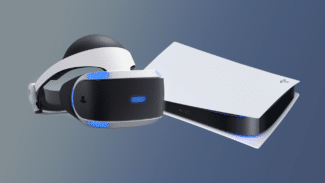April has been a funny sort of month for Sony Interactive Entertainment and the PlayStation brand, bookended by contradictory events.
At the beginning of the month, Bloomberg’s Jason Schreier reported on a shift in strategy for the gaming giant that would see it moving away from riskier game pitches and doubling down on the tentpole franchises that earned their keep in the PS4 era. More of the proven staples like The Last Of Us and less of the quirkier, oddball games put out by teams like Sony Japan, which just underwent dramatic restructuring and bled a lot of key staff, supporting the report’s claims.
Paradoxically, last week Sony published one of its riskiest games in years, a punishing bullet-hell rougelite called Returnal. The very existence of the game — no doubt greenlit and developed long before these changes would have begun to take shape — serves as a strong reminder of the gems PlayStation’s publishing arm can produce when it defies convention. But, strangely, much of the conversation around whether or not Sony will take the kind of creative risks we want to see in the PS5 generation seems to forget the company is taking another significant gamble in a still-unproven area – VR.
True, the story around VR is changing by the day. The Oculus Quest 2 managed to outsell five years’ worth of Facebook headsets — Rift, Rift S, Go and Quest 1 — in five months, and some developers are now making healthy revenue as a result. But, even now, the technology’s fabled mainstream moment doesn’t feel fully realized, and there’s still varying interest between the game’s industry’s biggest names, where PlayStation is squarely focused. Most have perhaps a few experiments to their name (remember Activision’s Call of Duty: Jackal Assault?), but few are, at this point, publicly committing to ambitious new projects. And, if they are, they seem to be funded by Facebook exclusivity deals.
VR is still yet to reach a self-sustaining ecosystem in gaming; Sony sold five million PSVR’s in four years and, at the time of that announcement, that was considered to be probably the best performance of any VR headset to date. PSVR sales may have possibly climbed to six million or beyond in the following year (Sony hasn’t confirmed) but, whichever way you cut it, it’s the tiniest slice of the 115.9 million-strong install base for the PS4 itself. The numbers are small enough that even competitor Xbox — now controlling the narrative for consumer-friendly strategies and bets on risky games — seems disinterested in VR’s potential in its current form.
Not to mention that Sony’s next VR headset doesn’t sound like it will be a standalone like Quest 2 – we already know it connects to the PS5 via a single cord and Sony is unlikely to raise cost by implementing powerful onboard compute too. This will still very likely be an expensive headset tied to an expensive console, and a comparatively harder sell to the ease of all-in-one VR.
There is little to say, right now at least, that Sony’s follow-up VR headset will become a trail-blazing success that elevates it from niche status, even with a promised leap in tech specs and the improved performance of the PS5. But the company seems to have made its peace with that, anticipates that the ceiling for PSVR 2 might simply be “good business” and accepted that it’s a risk it wants to take all the same.
And that’s just hardware – if you want to sell it you need to invest in software too. And there’s nothing riskier in games development right now than going all-in on VR. Every VR game is a risk; a gamble on what type of content will resonate with enough players inside a niche medium to create something profitable. Precious few have cracked that equation, and VR games are still incredibly hard and confusing to make. Blood & Truth is an exhaustive exercise in scenario design and high interactivity, and Astro Bot: Rescue Mission uses the DualShock 4 in ways no other game has thought of. There’s little in the way of standards, and some like to pretend that comfort issues have disappeared when, in reality, they’re very much alive.
When developers get it right, though, VR is absolute magic and the most refreshing experience you can find in gaming today. PS4 saw some incredibly creative titles, but few could match the sheer innovation of PSVR’s Tilt Brush, the unbridled connection of interactingng with animals in Paper Beast, or even the evolutionary satisfaction of a melee kill in The Walking Dead: Saints & Sinners. There’s just nothing else like it.
However you look at it and even with recent prospects considered, VR is still a very big and very expensive risk, both creatively and technologically. I hope we’ll see plenty more gambles extend from its arrival on PS5. The truth, I suspect, is that a new PSVR just isn’t the risk some actually want Sony to take, and that’s more than understandable. It means fewer resources for the types of experiences they love and more developers working on games they don’t want to play. But you can’t deny that, in going another round with VR, PlayStation is surviving its riskier edge.





